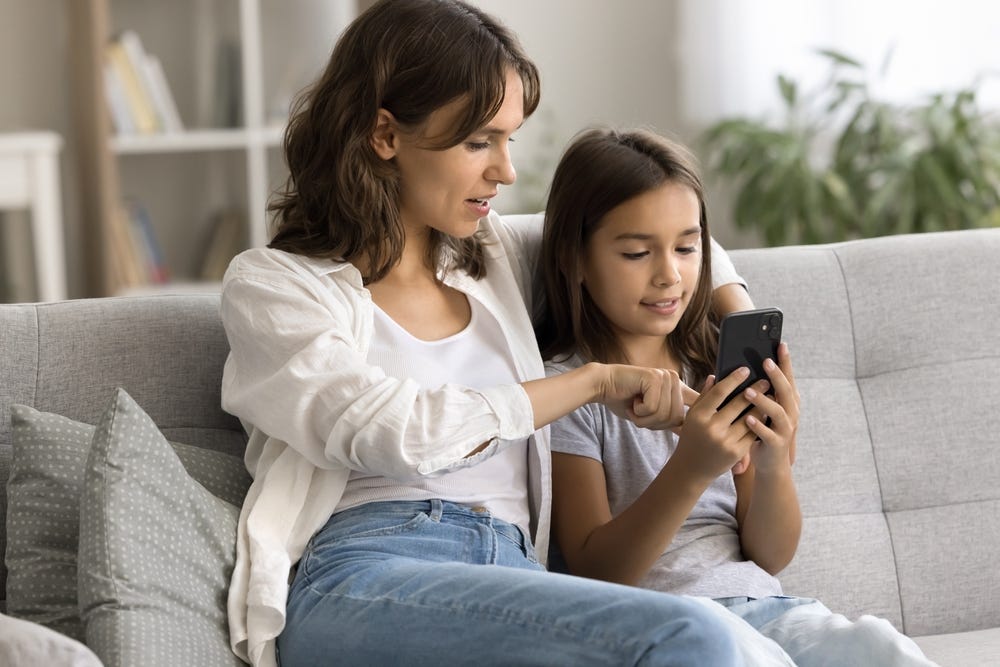Children, Self-Regulation, and Technology
How do we help our kids develop the skills to have a healthy relationship with tech?
We all had that friend - the one whose parents were super strict about junk food growing up - that went a little bit crazy when they were on their own. When mine was finally on her own, unsupervised in a college dining hall, she resembled a young child in a candy store. She ate bowls of sugary cereal for breakfast, had dessert at every meal, and rarely put any vegetables on her plate. Her parents had been so strict with her growing up that she needed to experiment and see what all of the hype was about.
My friend’s story about junk food comes up often when I talk to families about technology. In my opinion, the single most important technology-related skill that we can teach our children is self-regulation. Our kids are going to be much more tech-literate than we are. It’s just a fact. And, for those of us with young children, we likely can’t conceive of the ways our children are going to use and interact with technology in the future. However, we can instill in them the ability to be aware of their technology use, set healthy boundaries for themselves, and reflect and iterate on their tech practices. In today’s newsletter, I’m going to break down what self-regulation looks like (in regards to technology) by developmental stage and give you a few tips to develop self-regulation for each stage.
But first, what exactly is self-regulation?
According to the American Psychological Association, self-regulation is “the control of one’s behavior through the use of self-monitoring (keeping a record of one’s behavior), self-evaluation (assessing the information obtained during self-monitoring), and self-reinforcement (rewarding oneself for appropriate behavior or for attaining a goal).” My vision of an 18 year-old with age-appropriate tech self-regulation skills is this: a teenager who knows how to use technology to have fun (whether that’s using social media, reading fan-fiction, or playing video games), but also knows how to set boundaries so they can adequately focus on the other parts of their lives (in-person social relationships, school or work, and in-person activities.)
So, how do we help our kids get there?
Very young children (0-5):
At this stage, modeling is the name of the game. Children of all ages learn from what we do (Bandura, 1972). Our children learn not only from our own tech habits (i.e. it’s okay to look at your device instead of someone who is talking to you), but also by how we set boundaries and demonstrate self-awareness. At this stage, the following practices can be useful:
Establishing routines around technology: Routines help children predict when they will have access to technology. They take the guess-work away and help kids manage their emotions related to having to put their screens away. When we can say, “You’ll get to watch again tomorrow after lunch.” and our kids know that’s true, they can often regulate their emotions better.
Asking questions that help build awareness about preferences: By asking our kids what they like about certain content and why, we help them develop a voice and show independence. We might ask, “Who’s your favorite character and why?” or “Why do you like this show better than that one?”
Model, model, model: As much as you can, narrate your own experiences with technology. Narrate when you find yourself mindlessly scrolling, narrate looking forward to watching a good show after the kids go to bed, and narrate using technology as a tool for productivity. The more that our kids see us self-regulating, the more they learn.
Older kids and tweens (5-12):
As our kids get older, the hope is that we start granting them more and more independence with guardrails. Older kids and tweens should have more say in how they are using technology and should be involved in family discussions about boundaries and rules related to technology. However, they still need boundaries, rules, and reflection to support their learning. A few tips for this age group:
Involve your children in the creation of a family media agreement: Together with your children, discuss the specifics of technology use in your home (for all members of the family). There are lots of templates out there (try this or this).
Ask questions to develop self-awareness: Ask your kids questions like, “How does playing that game make you feel afterward?” or “What makes that game so appealing?” Get curious about times that they haven’t had a positive experience with technology as well. Helping children understand why they prefer certain things over others helps develop self-awareness.
Provide independence and autonomy when appropriate: In safe, age-appropriate settings, older kids can benefit from independence and autonomy. Encourage your children to come to you if / when they encounter challenges, assuring them that they won’t be in trouble. This type of “supported independence” helps them to develop confidence and problem-solving skills.
Teenagers (13-18):
The teenage years are complex. Although teens often look like adults, their brains are not fully developed and they make decisions that reflect that. At this stage, it’s very important to know your teenager, their strengths, and their vulnerabilities. For example, with social media, research has shown that teenagers who are well-adjusted and do not suffer from emotional differences (like anxiety or depression) benefit from social media, while those who are predisposed to depression or anxiety become more anxious or depressed as a result of social media use. In this case, its imperative that you know your own child and make decisions based on their individual characteristics. Here are a few ways to develop self-regulation in teenagers:
Teach teenagers to use tools to limit their own technology use. These include Apple’s screentime, Google’s wellbeing tools, apps like Forest or plug-ins like Leechblocker. There are also tools like Brick that can help you create different modes for your phone (work, sleep, school, etc.) and restrict use of specific apps.
Talk to teenagers about how certain content impacts their mental health. Encourage them to make decisions based on that information. Ask your teenagers questions about the content they see online and how it impacts them. Which content creators make them feel good about themselves? Which ones don’t? What can they do about it?
Encourage independence, but work through mistakes together. As your teenagers approach 18, encourage more and more (supported) independence with their devices. However, also make it clear that they can talk to you if they come across something that feels dangerous or uncomfortable. Check in often and offer to brainstorm solutions with them if they’d like.
Our kids are going to interact with technology for the rest of their lives, in ways we can hardly conceive. Let’s set them up for success by giving them the skills they need to have a balanced and healthy relationship with that technology.





